As the U.S. administration increasingly resembles a political circus, a new "hope" has emerged in the form of yet another "mighty" cruise missile. Once again, we see the revival of dreams that a single “technological marvel” might turn the tide of war, delivering a decisive blow to Russia and forcing it to negotiate, ideally under the terms dictated by the self-styled deal brokers of modern geopolitics.
The latest wunderwaffe is back on the table. And the moment it's mentioned, the warmongering clowns from both sides of the Atlantic begin to salivate. In their minds, the Kerch Bridge is already a smoking ruin, and the victorious Ukrainian army is triumphantly reclaiming all lost territory. It’s the same song and dance, just with a new chorus: “Game-changer,” now on its 15th (or greater) edition.
This so-called miracle weapon—soon to be seen on Ukrainian airfields and likely staged at NATO bases within striking distance of high-value targets—is the AGM-158 in all its variants. But what exactly is this famous missile? And more importantly, is there any real chance that it can alter the course of the war and pull Ukraine back from the brink of collapse?
What is the AGM-158?
The Joint Air-to-Surface Standoff Missile (JASSM) program began production in 1998, with the U.S. Air Force declaring it operational in 2003. The extended-range variant, JASSM-ER, underwent its first test in 2006, and the initial batch was delivered to the U.S. Air Force in March 2014.
Designed for low observability, the JASSM features a stealthy airframe optimized to penetrate advanced air defense systems, including the Russian S-300 family and its successors. The missile's reduced radar cross-section enhances its survivability in contested environments. A major upgrade to the JASSM-ER includes a Weapon Data Link (WDL), enabling in-flight course correction, particularly important for engaging mobile or maritime targets.
In 2018, the Air Force launched development of the AGM-158D, also known as JASSM-XR (Extreme Range), with a projected range of approximately 1,800 km. Deliveries of this variant started in 2024.
The baseline JASSM has a range of 370 kilometers, while the JASSM-ER extends that to approximately 1,000 kilometers. Although visually identical, the two differ internally; the ER variant contains a larger fuel tank and a more efficient turbofan engine, compared to the standard model’s turbojet. The missile’s aerodynamic profile features blended, angular lines reminiscent of the Taurus KEPD 350, though it is more fluid and rounded in appearance. For compact storage, the fins and wings are folded during carriage and deployed after launch using small explosive actuators.
Both JASSM variants are 4.26 meters in length, 0.55 meters in diameter, and 0.45 meters in height, with a wingspan of 2.7 meters when deployed. Their launch weight is approximately 1,023 kilograms. Each missile carries a WDU-42/B warhead weighing around 432 kilograms, designed for penetration and blast-fragmentation effects.
Navigation is handled by an Inertial Navigation System (INS) and GPS, similar to that used in the JDAM and JSOW systems. For terminal guidance, an imaging infrared (IR) seeker is employed. Each missile can store up to eight pre-programmed three-dimensional target models, and the U.S. Air Force rates the system to achieve a Circular Error Probable (CEP) of just three meters.
The JASSM is compatible with a wide range of platforms, including the B-1B Lancer, B-2 Spirit, B-52H Stratofortress, F-15E Strike Eagle, F-16C/D Fighting Falcon, and F/A-18C/D Hornet. The F-35 Joint Strike Fighter may be cleared to carry the missile in the future, but only externally, as the JASSM is too large for the aircraft’s internal weapons bays. Among all platforms, the B-1B is the most heavily armed, capable of carrying up to 24 JASSMs. The B-2 Spirit can carry 16, while the B-52H is equipped to carry 12 on internal rotary launchers. Fighter aircraft typically carry one JASSM under each wing, although in May 2021, an F-15E was configured with five missiles—an unusual loadout that demonstrates operational flexibility.
To date, the U.S. Air Force has acquired several thousand JASSM missiles and plans to purchase up to 12,000 in total. Several allied nations, including Australia, Finland, the Netherlands, and Poland, have either deployed or are in the process of integrating the JASSM into their own arsenals.
In June 2017, the United States deployed more than 10 JASSMs to South Korea for use by U.S. Air Force F-16s stationed in the region. The missile saw its first combat use in April 2018, when 19 JASSM-A variants were launched against Syria’s Barzah Research and Development Center, a facility believed to be involved in chemical weapons production. A year later, in October 2019, JASSM-ER variants were reportedly used in the targeted strike against ISIS leader Abu Bakr al-Baghdadi's hideout, as part of a broader decapitation operation.
Which one for Zelya?
If the plan to equip Ukrainian forces with JASSM missiles materializes, it is highly likely that they will receive the basic variant. However, there is also a possibility that a limited number of extended-range versions could be delivered as well.
The next issue concerns the delivery platform. The current Ukrainian inventory includes around two dozen F-16A aircraft, which were not originally designed to carry the JASSM munition. Beyond that, several of these jets have already been destroyed on the ground, and at least three have been lost during combat missions. Given the age and condition of these aircraft, their availability is highly questionable. In practical terms, Ukraine would likely struggle to field more than two operational pairs at any given time.
The F-16A, being an early Block version, was not originally designed to integrate modern long-range stand-off munitions like the JASSM. However, it can be modified — though doing so is non-trivial and requires a combination of hardware, software, and certification upgrades. These old ones can be utilized in the AD role against drones and cruise missiles.
If there’s a will to upgrade them, the simplified steps required to modify the F-16A to carry the AGM-158 JASSM include:
1. Avionics Upgrade
Upgrade to a modern Mission Computer (MMC): Early F-16A models utilize outdated computers that are incompatible with JASSM software.
Must install a version of the Operational Flight Program (OFP) that supports JASSM targeting and guidance, usually found in Block 50/52 and later.
2. MIL-STD-1760 Interface
The AGM-158 requires a MIL-STD-1760 digital data bus, which allows communication between the missile and the aircraft's avionics.
Older F-16A pylons (especially on Stations 3 and 7) must be upgraded or replaced with smart pylons that support this interface.
3. Weapon Integration Software
Aircraft software must include JASSM integration packages, enabling target upload, mission planning, mid-course updates (if equipped with WDL), and missile release protocols.
May involve firmware updates to:
Stores Management System (SMS)
Fire Control Computer (FCC)
Data Transfer Equipment
4. Pylon and Rack Compatibility
Install MAU-12C/A ejector racks or equivalent on Stations 3 and 7.
Must support physical and electrical loads (JASSM weighs over 1,000 kg).
Include umbilical harnesses for power and data transfer.
5. Flight Certification & Structural Assessment
A structural evaluation must confirm that the airframe and pylon mount points can accommodate the weight and aerodynamic loads of the JASSM.
Flight testing (or wind tunnel data from similar models) is required to validate safe carriage and release.
6. Mission Planning System
Integration with modern Mission Planning Systems (like JMPS) to allow ground crews and pilots to upload JASSM strike data, terrain profiles, and terminal guidance parameters.
Practical Examples
Poland successfully upgraded its F-16C/D Block 52+ fleet to carry JASSM and later JASSM-ER. F-16AM (MLU) aircraft in NATO service (e.g., Netherlands, Norway) have undergone Mid-Life Upgrades that include many of these modifications, making them JASSM-compatible. However, a basic F-16A Block 10/15 without MLU lacks nearly all required systems.
The bottom line is that upgrading Ukrainian F-16A aircraft to carry AGM-158 JASSM would be technically possible only if they undergo:
Extensive avionics modernization
MIL-STD-1760 integration
Pylon/hardware adaptation
Certification and validation
This is time-consuming and expensive, likely costing millions per airframe. In contrast, it would be faster and more cost-effective for the Western partners to supply newer surplus F-16C Block 40/50 aircraft already capable of carrying JASSM, if political and logistical conditions allow. The financing is not an issue for now, though, especially because the Western taxpayer “sheep” are easy to manipulate at all levels.
The AGM-158 is mounted on the F-16's inboard wing pylons, known as Station 3 (left wing) and Station 7 (right wing). These stations are structurally reinforced and equipped with MIL-STD-1760 smart interfaces to support heavy, precision-guided munitions like the JASSM. Each F-16 typically carries one missile per wing, with a maximum loadout of two JASSMs. These inboard wing hardpoints typically house GBU-24/GBU-31 JDAMs or 600-gallon external fuel tanks. They have a weight capacity of ~3,500 lbs each and are designed for extended-range missions or heavy-strike operations.
Each wing pylon is equipped with a bomb ejector rack and a weapon Remote Interface Unit (RIU). Multiple combinations of ejector racks, launchers, and weapons can be mounted using the MAU-12C/A bomb ejector rack.
Umbilical harnesses are used to interface with various racks or launchers, enabling proper electrical and signal connections. The wing armament pylons attach directly to hardpoints on the lower wing surface, with provisions for making discrete electrical connections at the interface. These electrical connections provide the necessary wiring interface between the aircraft and the pylon-mounted electrical components.
There were two previous articles on BMA addressing the F-16; readers are encouraged to consult those for background information for this discussion.
Ukrainian F-16 Saga [i]
With much propaganda and pomp, the "game changer" Western tanks and armored vehicles were introduced into the Ukrainian military and ingloriously failed during the "decisive" (and still ongoing at th…
Ukrainian F-16 Saga Continues [i]
Summer is here… heatwaves are incoming, and with them, the much-announced and expected Ukrainian new wonder weapon — his “majesty,” the F-16.
At this stage, the F-16 faces several critical limitations that significantly constrain its operational utility in Ukraine. The most immediate challenge is runway dependency: the F-16 requires long, smooth, and well-maintained runways, but most Ukrainian airbases are highly vulnerable to Russian missile and drone strikes. This makes dispersal and safe forward basing exceptionally difficult.
Maintenance is another major hurdle. The F-16 is a high-tech platform with complex logistical demands, particularly so for older airframes, which require more frequent servicing and parts support, often from Western sources. Ukraine’s infrastructure is not yet fully prepared to support this level of sustainment without external help.
Perhaps the most urgent issue is pilot availability. Training competent F-16 pilots takes considerable time, and Ukraine currently faces a severe shortage. While training programs are underway, the country will initially operate with a very limited pool of combat-ready crews. To bridge this gap, there is growing speculation—and some credible indicators—that Western “volunteers,” likely including former NATO pilots, are already flying or assisting operations inside Ukraine.
Weapons integration presents another layer of complexity. Advanced munitions such as JASSM, JSOW, and SDB require proper software blocks, secure data links, and platform certification before they can be used effectively. These upgrades are not universally available on older F-16 variants and may require further modification or clearance from the U.S. and allies.
Lastly, survivability remains a major concern. In the absence of airborne early warning systems (AWACS) and robust electronic warfare (EW) support, Ukrainian F-16s will be exposed to Russian long-range SAMs such as the S-300 and S-400. Given Russia’s demonstrated ability to down aircraft deep behind the front lines, survivability without an integrated support architecture is questionable at best—and potentially disastrous at worst.
The stealthiness
The AGM-158 JASSM was specifically designed with stealth characteristics to penetrate dense, modern air defense systems such as the Russian S-300 and S-400 families. While its exact Radar Cross Section (RCS) remains classified (as far as the general public is concerned), a detailed technical analysis of its design features, public disclosures, and comparative industry estimates can help us narrow down its RCS range and explain the engineering behind its low observability. Notably, Russians and Chinese are likely aware of the exact RCS and all other details.
Estimated RCS is 0.001 m² to 0.01 m² (−30 to −20 dBsm), depending on angle and frequency band. This is comparable to a small bird or steel ball in terms of radar signature. The goal of the designers regarding the stealth characteristics was to make the missile detectable only at very short ranges—if at all—by modern radar systems operating in the X- and S-band. This simply means for the modern target acquisition and fire control radars. The following is a still from the frontal RCS simulation:1
Comparison between medium frontal RCS for different cruise missiles:2
Novel internal material treatments incorporate Radar Absorbent Material (RAM) coatings across the airframe. It likely uses a resin-based composite skin, which attenuates radar energy at high frequencies.
Engine integration is the next step, which was achieved by using a shielded engine intake and an S-shaped duct, thereby minimizing radar reflection into the inlet. The exhaust is blended with the body to reduce IR and radar return from the nozzle area.
According to available data (which can be considered very optimistic from the perspective of the “equipment sales guy” mentality), in the X-band (where the majority of fire-control radars operate), JASSM is declared highly stealthy, with an RCS of less than −30 dBsm. For the S-band (search radars), its observability is very low, but more detectable than in X-band.
For the VHF/UHF (long-wave radars or metric radars) JASSM is more susceptible, but due to its small size and low profile, still difficult to track. In the L-band (early warning radars), JASSM exhibits moderate detectability at longer ranges, but still has a lower RCS compared to conventional missiles.
The logical question following the discussion on stealthiness is, how is this applicable to the detection and engagement range capabilities of the Russian S-300/S-400 systems?
According to information circulating in Western media, the S-300PMU2 system's detection range, with its X-band tracking radar, is 20–30 km. S-400 (Nebo-M or 92N6E radar) possibly 40–50 km under optimal conditions, but engagement range would be far less due to late detection.
These are conservative estimates; stealth shaping and terrain masking likely result in even shorter detection ranges in combat.
Discussions around the JASSM often focus by default on its potential to penetrate long-range air defense systems like the S-300 or S-400, but this overlooks a critical point: these strategic systems are not primarily designed to intercept cruise missiles. In reality, the systems tasked with countering threats like the JASSM are the Buk-M2/M3, S-350 Vityaz, and similar medium-range surface-to-air missile systems. However, their detection and interception capabilities often receive far less attention in public discourse.
Moreover, long-range SAM systems are typically protected by short-range point defense systems such as Tor-M2 and Pantsir-S1/S2. These systems are specifically optimized to detect and engage low-flying, low-RCS targets, such as cruise missiles, and feature extremely short reaction times, often just a few seconds from detection to launch. This layered air defense structure, with medium-range interceptors providing area coverage and short-range systems guarding critical assets, poses the most immediate threat to cruise missile strikes, not the S-400 batteries themselves.
JASMM against Russian Air Defense
While public discourse often pits JASSM against S-400, the real interceptors are Buk, S-350, Tor, and Pantsir, and these systems pose a far more immediate threat to cruise missiles in a battlefield like Ukraine.
In very plain language and without diving into the integrated air defense system, in Russian doctrine, S-400, Buk-M3, S-350, Tor, and Pantsir work in layered integration:
S-400 handles long-range airspace control
S-350/Buk provides mid-range intercepts
Tor and Pantsir form the last line of defense, optimized for low-flying threats
When JASSMs or Storm Shadows are employed, their primary vulnerability does not stem from long-range systems like the S-400, but rather from Tor and Pantsir batteries positioned near the target area, as well as Buk-M2/M3 and S-350 systems along the flight path. For this reason, successful cruise missile missions require meticulous terrain masking, carefully planned waypoints to avoid air defense clusters, and ideally, pre-emptive SEAD (Suppression of Enemy Air Defenses) missions or decoy deployments (such as the ADM-160 MALD) to confuse or saturate mid- and short-range air defense systems.
At present, Ukrainian forces lack the capacity to fully execute this level of coordinated strike planning and support. As a result, the key enabler of any cruise missile operation involving JASSM—or similar advanced munitions—is direct U.S. involvement, and to some extent, NATO support. Without these external assets, Ukraine's ability to conduct effective long-range precision strikes is extremely limited. In practical terms, this means that any JASSM strike conducted from Ukrainian territory will almost certainly have U.S. targeting support, planning assistance, and operational oversight behind it. Simply put: Ukrainians may launch the missile, but American expertise will guide the strike.
To improve the odds of intercepting incoming threats, Russian air defense forces employ a layered defense strategy that integrates long-range systems, such as the S-400 and S-300, mid-range platforms like the Buk-M3, and close-range defenses, including the Pantsir-S1 and Tor-M2. These systems are supported by electronic warfare (EW) assets to establish overlapping fields of fire and comprehensive coverage.
Early engagement is a key component, with interceptors like the MiG-31 and Su-35 tasked with neutralizing launch platforms (such as Ukrainian F-16s or Su-24s) before they can fire cruise missiles. Denying the enemy a safe standoff launch distance is central to this approach.
Deception and mobility are also vital. Air defense batteries frequently relocate to avoid detection, using camouflage and minimizing radar emissions ("shoot-and-scoot" tactics) to reduce their exposure to pre-planned JASSM strikes. Radars are often turned off between engagements to avoid being geolocated and targeted.
Finally, electronic warfare plays a significant role. Russian forces use GPS jamming and spoofing to interfere with the missile’s navigation, particularly in scenarios where JASSMs rely on mid-course satellite updates or GPS-based targeting. By disrupting these signals, the guidance accuracy of the missile can be significantly reduced, increasing the chances of interception or mission failure.
How AGM-158 compares with the other NATO “pride”
Stealthniness
The JASSM stands out as the stealthiest of the group. Its angular design, low-profile blended body, RAM coatings, and shielded engine intake give it an extremely low radar cross-section (estimated ~0.001–0.01 m²). It was specifically designed to evade advanced radar systems, such as the S-300 and S-400.
By comparison, Storm Shadow and SCALP have semi-stealthy designs, focusing on low-altitude terrain masking rather than radar deflection. Their larger vertical profiles and intake positions make them more detectable by radar.
The Taurus has slightly better RCS management than Storm Shadow due to subtle shaping and a low IR signature, but it still cannot match JASSM’s stealth in high-frequency radar bands.
Warhead and Target Effects
The JASSM carries a ~450 kg single-stage penetrating and blast-fragmentation warhead (WDU-42/B). It's optimized for general hardened targets, command bunkers, and infrastructure, but is less advanced in multi-stage penetration.
Storm Shadow and SCALP use the BROACH warhead, a two-stage design. It features a precursor charge to create a penetration path, followed by a main warhead that detonates inside the structure. This makes them more effective at destroying buried or hardened targets, such as airfield shelters or command posts.
The Taurus takes it a step further with the MEPHISTO warhead, engineered for deep earth and bunker penetration. It offers precise aim-point control, variable fuzing, and low collateral damage options, making it the most specialized for hardened targets.
Guidance and Navigation
All four missiles utilize INS/GPS guidance with terrain-following capabilities, but differ in the sophistication of their terminal guidance.
JASSM: Uses Imaging Infrared (IIR) terminal seeker combined with 3D target models stored in memory. Capable of autonomous terminal discrimination, but the target must be pre-loaded.
Storm Shadow / SCALP: Also use IIR seekers, but are somewhat less flexible—generally pre-programmed and lack detailed post-launch re-targeting capability.
Taurus: Adds DSMAC-like image recognition, real-time terrain comparison, and automated aim point selection, making it the most autonomous and precise during the terminal phase.
Additionally, future variants of JASSM-ER and JASSM-XR will feature data links (WDL) for in-flight retargeting, which Taurus and Storm Shadow lack.
Range and Performance
JASSM-A: ~370 km
JASSM-ER: ~925–1,000 km
JASSM-XR (in development): ~1,800 km
Storm Shadow/SCALP: ~250–560 km (range limited by export control regulations)
Taurus KEPD 350: ~500–600 km
JASSM clearly outclasses the others in range, especially with the ER and XR versions. This gives the U.S. and any JASSM-ER user the ability to launch from well outside the engagement zones of enemy SAMs.
Platform Compatibility
JASSM: Designed for U.S. and NATO aircraft – F-15E, F-16, B-1B, B-52, B-2, and future F-35 (external). Integration requires MIL-STD-1760 and digital avionics.
Storm Shadow / SCALP: Integrated on Eurofighter Typhoon, Tornado, Rafale, Mirage 2000, and now Ukrainian Su-24s (adapted).
Taurus: Compatible with Eurofighter, Tornado, F/A-18, and potentially modifiable for Su-24 or F-16 (if software/hardware allows).
JASSM has broader strategic integration, but Storm Shadow has seen more combat use in Ukraine, due to earlier delivery and easier retrofit to legacy airframes like the Su-24.
Operational Use and Export
JASSM: Deployed by the U.S., Australia, Poland, Finland, and others. Used in Syria (2018) against chemical weapons facilities. Tight export control limits its distribution.
Storm Shadow/SCALP: Used by The UK, France, Italy, Saudi Arabia, and Ukraine. Combat-proven in Libya, Iraq, Syria, Yemen, and Ukraine.
Taurus: Used by Germany, South Korea, and Spain, with discussions ongoing for export to Ukraine. Not yet used in combat.
The new Wunderwaffe in action
Even the mere mention of a potential strike on the Kerch Bridge is enough to set off a wave of excitement among militarist commentators and sensationalist media figures, who elevate the concept to near-mythical proportions. In this context, the JASSM often assumes a status bordering on sacred, treated as if it were more consequential than the Pontiff himself. However, despite the hype, the JASSM is not a silver bullet capable of decisively destroying the bridge’s core structural components. While it could potentially inflict localized damage—perhaps enough to temporarily halt civilian traffic—the likelihood of delivering a strategic knockout is low without a sustained, well-coordinated strike campaign.
Moreover, the strategic relevance of the bridge has declined over time. In the early stages of the war, Russia heavily relied on the Kerch Bridge for military logistics to Crimea. But since then, alternative land routes have been firmly established, reducing Russia’s dependency on the bridge for moving military assets. Therefore, even a successful hit would likely result in more of a morale-boosting spectacle than a militarily decisive event.
Now let’s break down the possible scenario of the attack:
The Kerch Bridge remains one of the most challenging targets in the region—a long, heavily reinforced structure with hardened concrete spans and deep foundations. It is not only structurally resilient but also protected by a dense, multi-layered air defense network, including S-400, Tor-M2, and Pantsir-S1 systems operated by highly experienced Russian crews.
If NATO planners—or, by extension, Ukraine with NATO support—were to consider such a strike, the first step would be determining the launch point. If the AGM-158B JASSM-ER is used, it could theoretically be launched from central or even western Ukraine, offering a standoff range of up to 800 kilometers. That distance makes it attractive not just for Ukrainian F-16s, but also for NATO aircraft operating from Romania or Poland, while remaining well outside the reach of Russian SAMs.
On paper, this looks feasible. The JASSM’s stealth shaping, low-altitude flight profile, and GPS/IR-guided terminal phase give it a solid chance of slipping through portions of Russian radar coverage. However, several operational and technical limitations remain. The missile’s 450 kg warhead, while potent, is not guaranteed to destroy major structural elements of the bridge unless the impact occurs at a precisely calculated weak point—and even then, multiple simultaneous hits would likely be required to achieve a functional kill.
This means the only realistic path to success involves saturation tactics: a combination of decoys (such as ADM-160 MALD) and UAVs launched to overwhelm and confuse enemy air defenses, thereby clearing a path for the cruise missiles. Assuming a Ukrainian F-16 formation of six aircraft, each armed with two JASSMs, they could launch 12 missiles in total. That kind of firepower might suffice against a mid-tier target, such as a Syrian command center—but this is Kerch, one of the most heavily defended sites in Russian-controlled territory.
Realistically, out of 12 JASSMs launched, perhaps one might reach the vicinity of the bridge, and even then, it's unlikely to cause significant structural damage beyond superficial blast effects. The strike would serve more as symbolism or propaganda, rather than a militarily decisive blow.
What follows is predictable: once the launch site is identified—either inside Ukraine or in a NATO state—retaliatory strikes using Russian drones and cruise missiles would almost certainly follow, targeting airbases and logistics nodes. Given Ukraine’s limited F-16 inventory, degraded airfields, and vulnerability to long-range precision strikes, such an operation would likely be one-off in nature. At most, Ukraine might be able to scramble one or two pairs of fighters for such a mission, making the cost-to-benefit ratio extremely unfavorable.
The second scenario involves neutralizing an S-400 battery.
The AGM-158 JASSM can theoretically disable key components of the S-400 air defense system, particularly if used in mass strikes or as part of a broader SEAD (Suppression of Enemy Air Defenses) campaign. While the missile is not intended to defeat the entire S-400 system on its own, it can surgically destroy vulnerable elements—especially radars and command posts—effectively blinding or paralyzing the battery to enable follow-on strikes.
The first and most critical step is to identify the exact location of the S-400 unit. This task would fall to NATO ELINT (Electronic Intelligence) assets. JASSM requires precise GPS coordinates, and ideally, a 3D model of the target radar to optimize the missile’s infrared terminal guidance. Targeting data would be gathered using satellite imagery (IMINT), signals intelligence (SIGINT), and drone reconnaissance.
Mission planning would likely take place at a NATO command facility—possibly in Wiesbaden, Germany. Flight routes would be carefully designed to avoid known radar coverage arcs and SAM deployments such as Buk-M3, S-350, or Tor-M2. The missiles would follow low-altitude terrain-masking paths, pre-programmed into their flight computers. Each missile also stores target imagery and 3D infrared profiles, allowing for accurate terminal homing via its IIR (Imaging Infrared) seeker.
Ukrainian F-16s would launch the JASSMs from well beyond the S-400’s engagement range. The timing of the launch would be carefully coordinated, likely synchronized with other offensive actions, such as drone swarms or decoy waves, to catch the battery off guard. The optimal moment might be shortly after the S-400 has already engaged incoming targets and is in a brief post-engagement reset period, where radar and fire-control systems are recalibrating.
Once airborne, JASSMs fly autonomously at altitudes of 30–50 meters, using a combination of inertial navigation and GPS to follow a predefined flight path. If equipped with a data link (JASSM-ER upgrade), the missiles can receive mid-course updates, allowing route or target corrections in real-time—an essential feature when engaging mobile or camouflaged air defense systems.
As the missiles approach the defended zone, they must penetrate multi-layered air defenses. In this phase, decoys and drones are critical—they will absorb the bulk of the defensive fire, allowing some of the real missiles to slip through. The chances of JASSM survival significantly increase in a massed, coordinated strike.
In the final 5–7 km, the IIR seeker activates, scanning for and matching infrared signatures of high-value targets—such as the 92N6E fire-control radar, command posts, or transporter erector launchers (TELs)—against stored models. The missile then performs terminal maneuvers to ensure precision impact.
Upon detonation, the JASSM’s ~450 kg WDU-42/B blast-fragmentation warhead delivers a lethal effect. A direct hit on the 92N6E radar or the 54K6E command post would almost certainly render the battery non-functional. Even the destruction of a single radar or launcher would disrupt the engagement process, blind the system, and force a temporary operational shutdown.
Conclusion
The AGM-158 JASSM is a sophisticated cruise missile with significant capabilities; however, its impact in the Ukrainian theater will be limited by several operational, technical, and strategic constraints.
JASSM offers key advantages, including a long standoff range of up to 925 kilometers for the extended-range version, and a stealthy, low-observable design that enables it to fly at low altitudes while evading radar detection. It is guided by a combination of GPS, inertial navigation, and a terminal imaging infrared seeker, making it ideal for precision strikes on fixed targets such as air defense radars, command centers, logistics depots, or infrastructure nodes.
However, there are significant limitations to how Ukraine can effectively utilize JASSM. First and foremost, Ukrainian aircraft, especially the F-16A/B variants, do not natively support JASSM. Software integration, aircraft modification, and extensive pilot training are necessary before deployment, and even then, assistance from NATO partners would be essential. Moreover, Ukraine lacks the independent surveillance and targeting infrastructure to support long-range precision strikes. JASSM requires high-quality intelligence, including GPS coordinates and radar or thermal signatures of the targets, which Ukraine cannot generate on its own. NATO assets such as satellites, ELINT/SIGINT platforms, and ISR drones would be crucial in planning any effective strike.
Even if Ukraine gains limited operational use of JASSM, Russian air defenses remain a formidable obstacle. Their layered systems, including S-400, Buk-M3, Pantsir-S1, and Tor-M2, are designed to protect high-value areas and are supported by electronic warfare assets capable of jamming or spoofing GPS signals. These systems are not invulnerable, but they are optimized to intercept cruise missiles, such as JASSM, particularly when used in small numbers or without decoys and SEAD (Suppression of Enemy Air Defenses) support.
Strategically, JASSM will not change the course of the war. It cannot destroy mobile units, shift front lines, or decisively degrade Russian operational capabilities. At best, it will allow Ukraine to strike some high-value, fixed targets behind the front lines—possibly disrupting logistics or temporarily blinding air defenses. Its main value will be in psychological and symbolic operations, such as damaging the Kerch Bridge or hitting command posts deep in Russian-occupied territory. But even such attacks would require complex coordination, flawless planning, and substantial NATO support. Any high-profile success would likely trigger swift retaliation, especially if Russia believes NATO territory or personnel were involved.
In summary, JASSM adds an important long-range strike option to Ukraine’s arsenal, but its overall impact will be limited. It won’t be a game-changer unless it is paired with real-time intelligence, proper aircraft integration, a stockpile of missiles, and a coordinated strategy involving drones, decoys, and electronic warfare. For now, it is a tactical tool with symbolic weight—but not a weapon that will fundamentally alter the war’s trajectory.
[i] Edited by Piquet (EditPiquet@gmail.com)
References:
M. Mihajlovic, Defending Putin's Empire: Russia's Air Defence System, Pen & Sword
M. Mihajlovic, Rockets and Missiles Over Ukraine: The Changing Face of Battle, Frontline Books
https://threadreaderapp.com/thread/1668593667987345408.html
https://www.youtube.com/watch?v=GXJaqJ3Dej8
Cui, Z.-D., Zhang, Z.-L., Yuan, L., Zhan, Z.-X., Design of Underground Structures
Е. Г. Борисов, В. И. Евдокимов, Высокоточное оружие и борьба с ним
Miropolsky, F.P., Sarkisian, R.S., Vishniakov, O.L. et al. (1996). Aircraft Warheads and Their Investigation. Moscow: Zhukovsky Academy etc.)
https://www.mbda-deutschland.de/wp-content/uploads/2018/03/Taurus-e-18.pdf
https://taurus-systems.de/wp-content/uploads/2016/10/TAURUS_KEPD_350E-EN-Aug2014.pdf
https://topwar.ru/218616-taurus-kepd-350-javno-nedoocenennyj-protivnik.html
https://dzen.ru/a/ZHMMlqkq6DA5qmDx
https://vk.com/wall-76992071_238015
Сухаревський О. І., Довідник характеристик розсіювання повітряних та наземних радіолокаційних об’єктів
If you like the article (and many more articles regarding military subjects will come), you can buy me a coffee:
https://www.buymeacoffee.com/mmihajloviW
https://www.youtube.com/watch?v=GXJaqJ3Dej8
https://threadreaderapp.com/thread/1668593667987345408.html





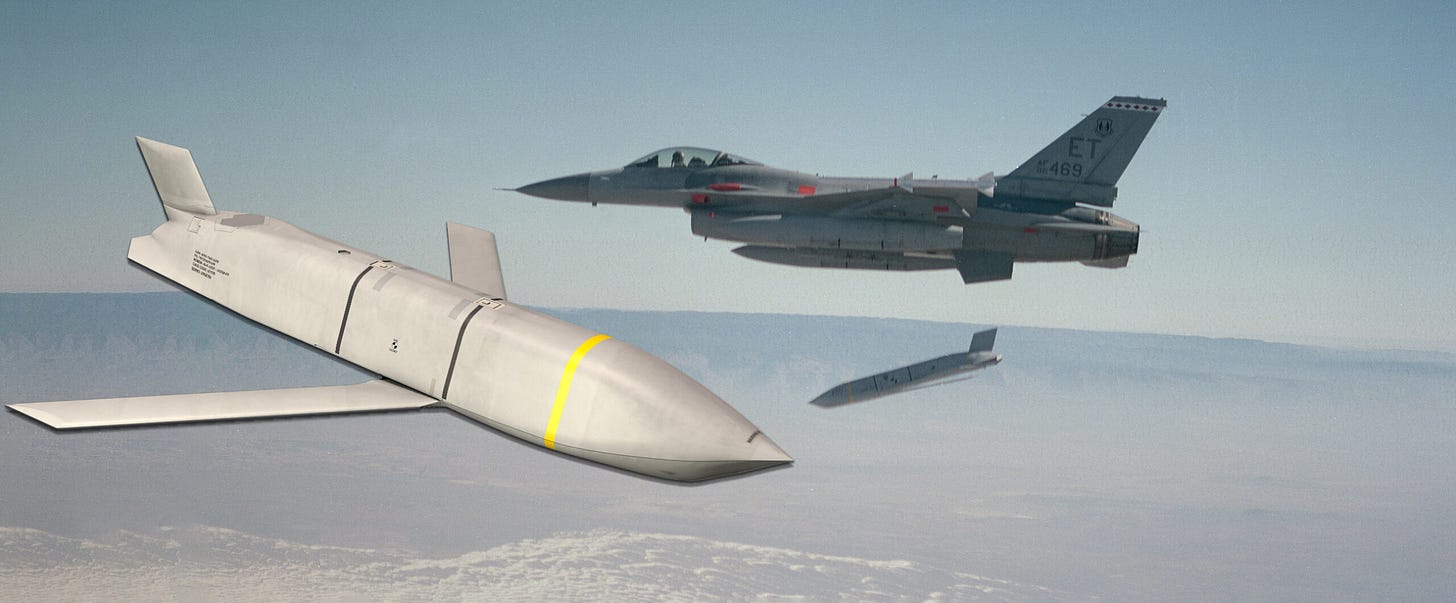



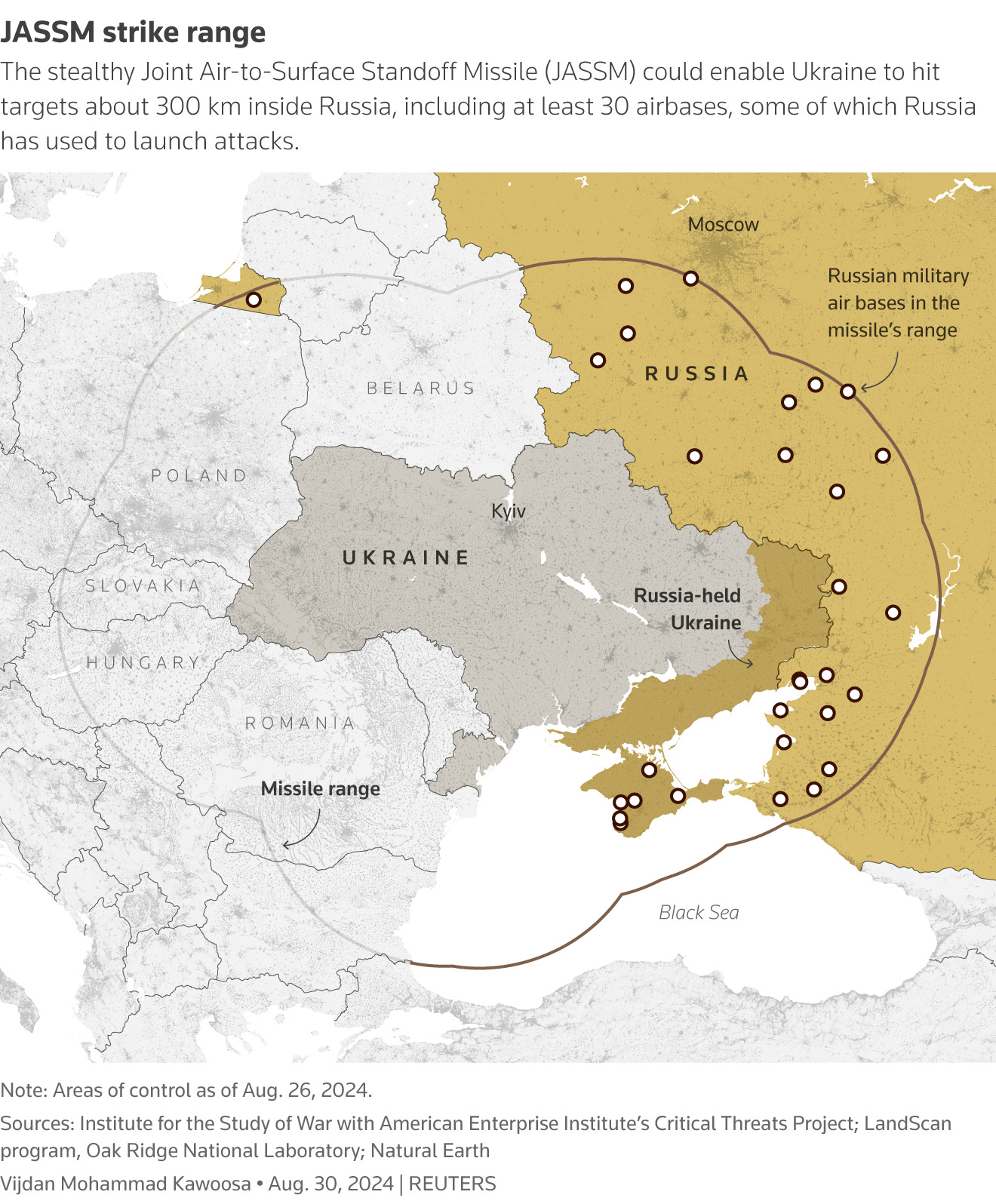
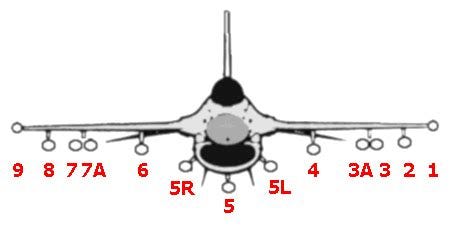
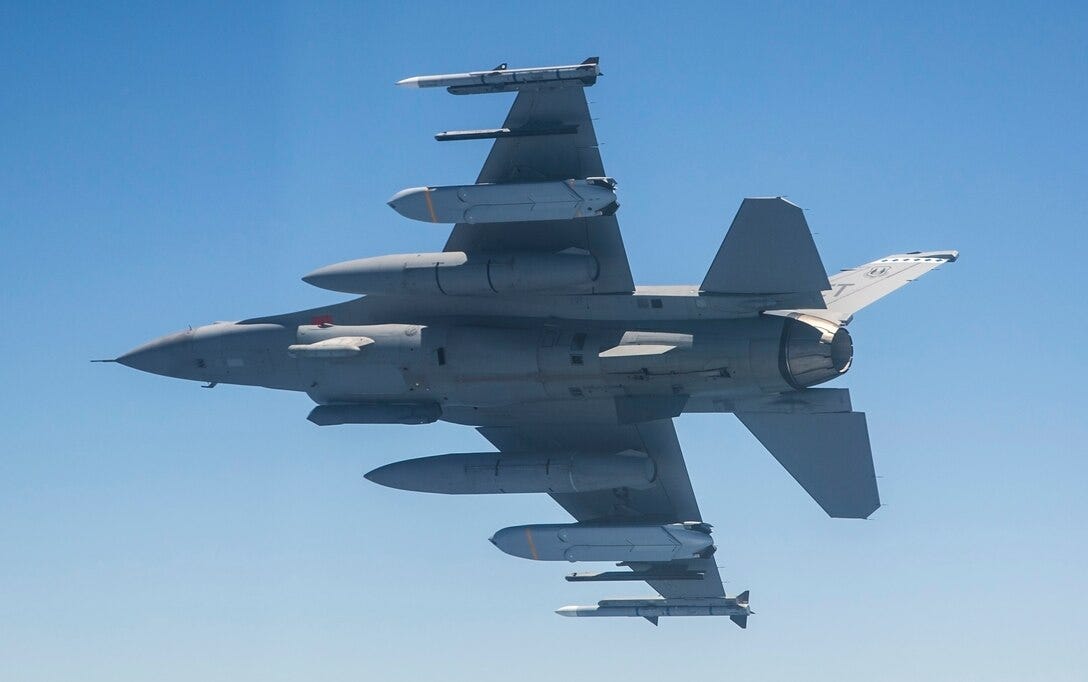
![Ukrainian F-16 Saga [i]](https://substackcdn.com/image/fetch/$s_!H310!,w_280,h_280,c_fill,f_auto,q_auto:good,fl_progressive:steep,g_auto/https%3A%2F%2Fsubstack-post-media.s3.amazonaws.com%2Fpublic%2Fimages%2Fb0efc38a-d245-457a-80e8-709b990d5a8c_1200x650.jpeg)
![Ukrainian F-16 Saga Continues [i]](https://substackcdn.com/image/fetch/$s_!FsYA!,w_280,h_280,c_fill,f_auto,q_auto:good,fl_progressive:steep,g_auto/https%3A%2F%2Fsubstack-post-media.s3.amazonaws.com%2Fpublic%2Fimages%2F4ce48c1c-6e83-41f8-907b-1d014492d975_671x443.jpeg)
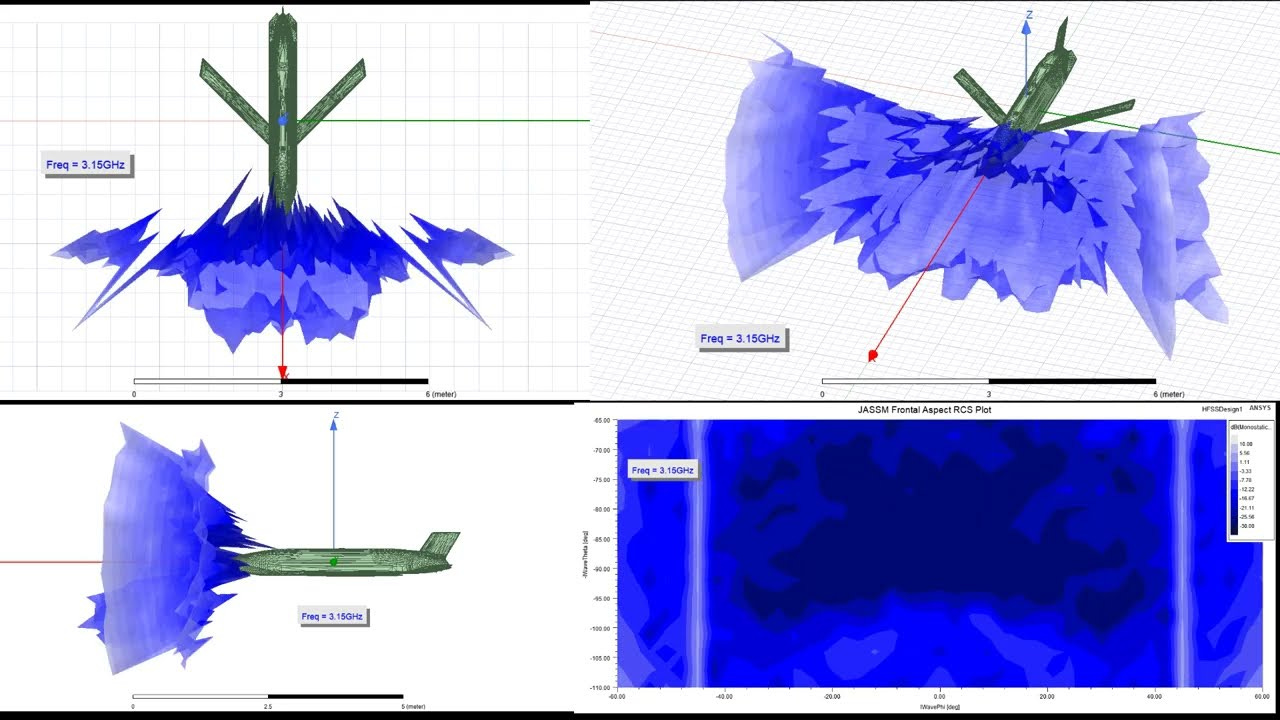
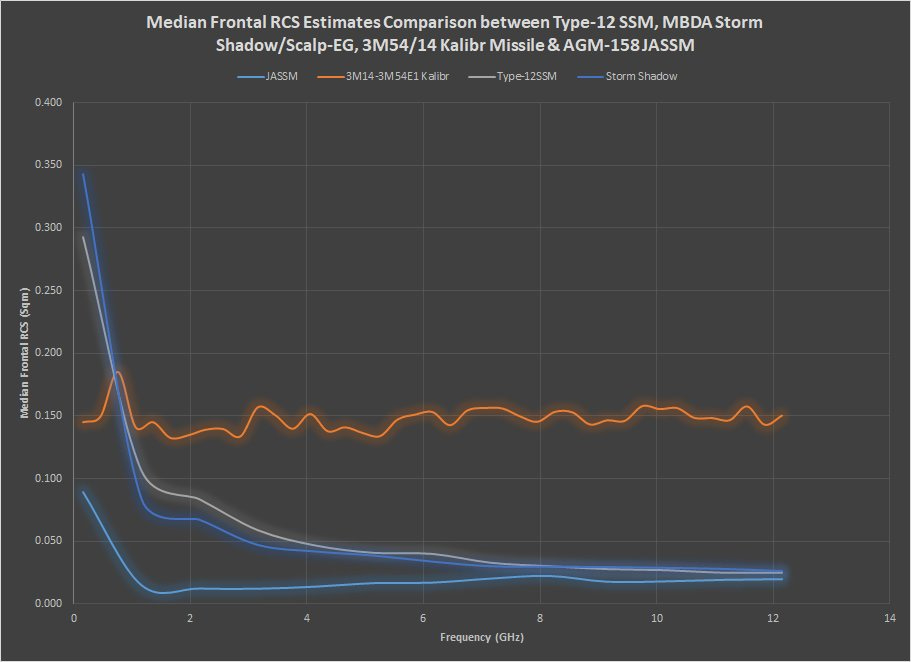


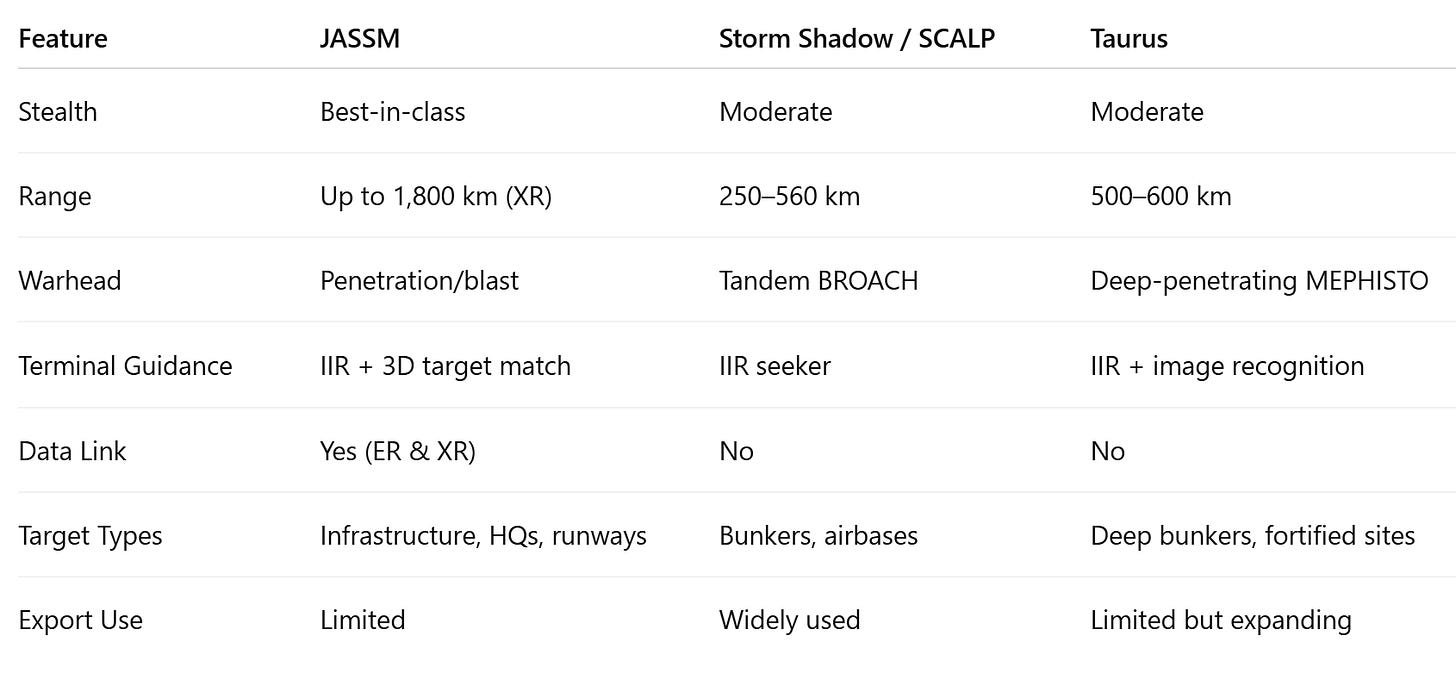

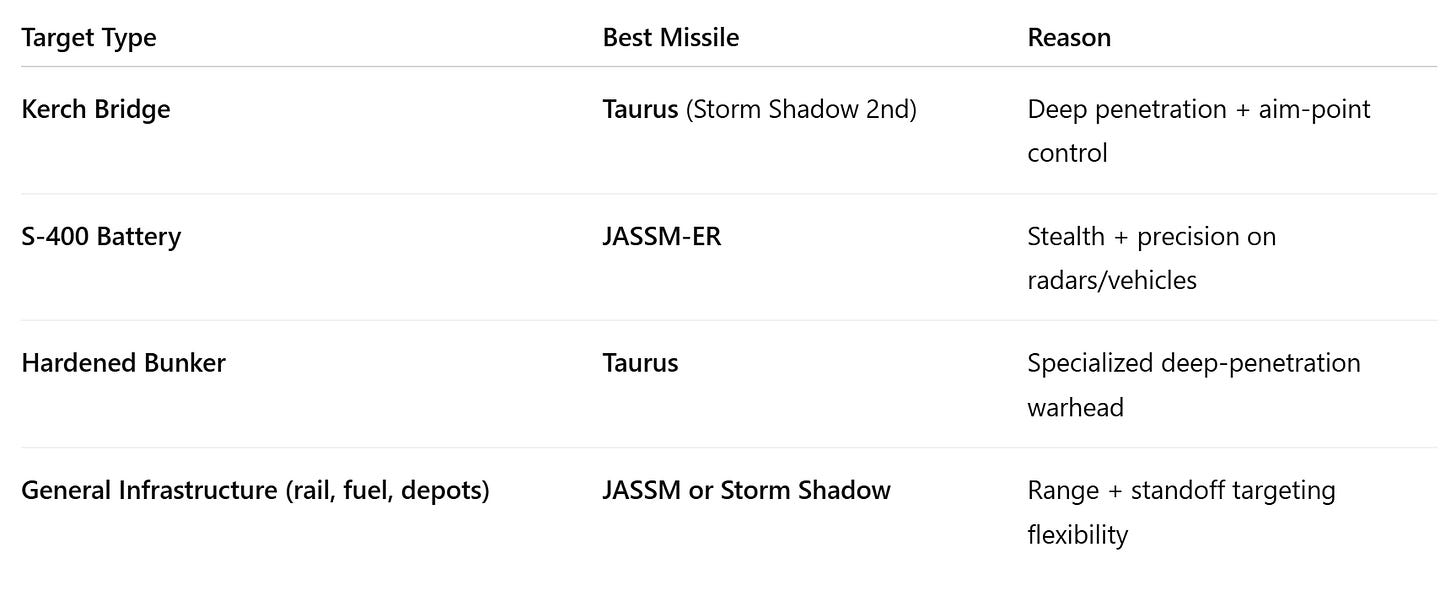
This continued harping on about the next 'Wonder Weapon' as a war winner shows that the West lacks a strategy in the Ukranian War.
Firstly, new weapons are just tools that should be intergratable into tactical and operational frameworks that support a strategic vision and concept. This is obviously lacking when looking at the West and its proxy-war in the Ukraine. The Russians have a strategic concept and each new weapon system introduced into the war fits within that vision - or it is not introduced at all.
Secondly, the record on new weapons systems introduced to Ukraine show them having a battlefield advantage of only a few months, at most, before counter measures are imposed by the enemy that negate or mitigate its advantage. The more the AGM-158 is used in Ukraine the more the Russians, and by extension the Chinese, learn how more effectively to deal with the weapon. And, as the author of the article points out - it will not effectively change the outcome of the war. Anyway Ukraine's main weakness is lack of manpower not new gadgets.
Lastly, this smacks of desperation. Each weapon system the West's introduces to Ukraine, we hope desperately will turn the tide in Ukraine's favour. NATO, having engaged in this war, at least materially - they are not willing to sacrifice blood, and having leveraged its prestige, treasure and technology in defeating Russia are desperate. If Russia wins this war, and all indications are that it will, then the foundations of NATO may shake. With Trump II acting against his allies economically, a military loss that is seen as exsitential, at least by some European elite, may erode NATO and if it remains then weaker than it was before.
Relying on a weapons system to win a war absent strategy is a bankrupt policy that leads to defeat.
Thanks Mike, for all of the information on yet another good western tactical weapon that may score hits initially, before Russian AD learn how to see and counter it.